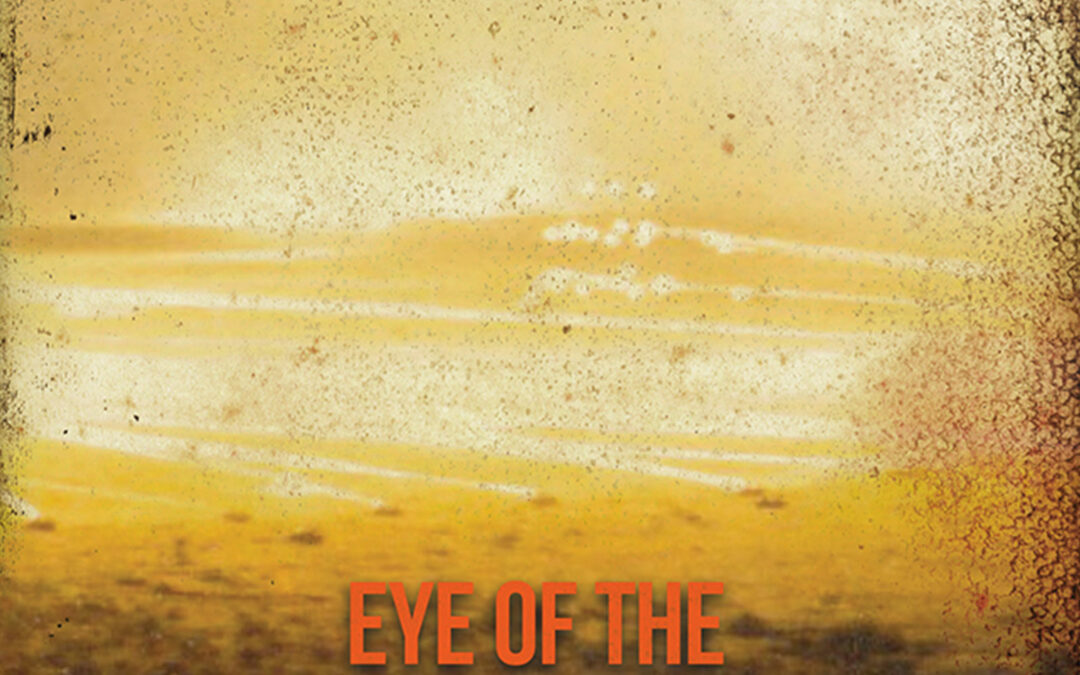From Eye of the Firestorm, Operation Meebos 1982
9 August – a crisp winter’s morning found 61 Mech in an ambushing position to the east of the Cuvelai-Techamutete road close to where it intersected with the Mui River. The frustrations relating to the finding of the next viable target for the TAC HQ was now the thing bedevilling the momentum and continuation of Meebos. Was the show petering out?
Captain Willem Ratte and his scouts were eagerly searching for the infamous Bravo Battalion of SWAPO – the main enemy 61 Mech had sought and had a few skirmishes with during Operation Daisy in November 1981. Roaming the wilderness somewhere as well were the Central and Eastern Area HQs of SWAPO and other loose assortments of SWAPO. Where the hell was the enemy, in six figure map grid reference’s terms please…? Show yourself damn it!
The target search by Ratte had now shifted to an area to the north-west of Cuvelai where fresh spoor of the enemy had been found. It was within two hour’s striking distance from where 61 Mech was influencing the road between Techamutete and Cuvelai. The TAC HQ decided to launch an area operation into the suspect area: Fly in with Puma transport helicopters and Alouette gunships and hope for a lucky strike; fly out again, tally-ho – was this a plan? Eight Pumas were poised for the trooping mission of the splendid soldiers of 32 Battalion and 1 Parachute Battalion. Ready to go… Just after midday the Pumas started flying the troops to their target zone just north of the Mui River, about 15km to the west of the Cuvelai-Techamutete road.
The flying pathway from the HAA almost took them over the deployment position of 61 Mech hidden in the bushes below and further along the dry river bed of the Mui. With their first flight the Pumas unwittingly flew over a deployed SWAPO anti-aircraft position lurking in a bushy patch of the Mui, approximately 15km west of the Cuvelai-Techamutete road. The second time around, at about 15h00, four Pumas flew with a flurry over the SWAPO position once again with their precious cargo on the way to a landing zone. A curtain of enemy anti-aircraft fire suddenly erupted from below and slammed into the second Puma piloted by Captain John Twaddle. The Puma plummeted to the ground, exploded and burst into flames. Three SAAF crew members and twelve paratroopers were killed – for a moment one of the paratroopers was still alive…This was an amazing tragedy; we had lost fifteen splendid soldiers in one swell swoop.
Soon after the Alouette gunships went into action against more than thirty SWAPO soldiers running towards the crash site. A battle ensued and some of the Alouette took hits from below. One Alouette pilot reported seeing more than hundred SWAPO insurgents dancing around the stricken Puma. More gunships were scrambled and were on their way to the contact site.
By this time the TAC HQ had informed 61 Mech about the unfolding tragedy in the Mui River. We immediately responded and started moving at best speed towards the position we knew were the fight with SWAPO and the gunships were raging, approximately 23km to our west. Time and distance wise it took our vanguard close on one hour of bundu bashing to get there. Move! Move! The battle was still raging at the downed Puma site whilst we moved.
The Alouette were taking fire from SWAPO’s formidable 14,5s and SAM-7s. The gunships needed to return to the HAA to re-arm and re-fuel. At this stage Captain Willem Ratte was still deployed further to the north, close to the Calonga River searching for enemy bases. 61 Mech reached the crash site within little more than an hour. As we deployed in an all-round defensive open leaguer around the crash site we could hear a mini-battle raging just to the north of our position.
My first instruction was for all of 61 Mech to remain extremely alert and to stay mounted on their Ratels until I had assessed the situation. I halted my Ratel next to the Puma helicopter, which was still smouldering. Looking down into the wreck we could see a few charred remains of the paratroopers. It was obvious that nobody could be alive. However, our biggest fear was that the enemy could have captured someone. As this was as much an army as an air force show, SAAF Major Jaap du Preez and I dismounted to inspect the blazing sight and analyse what had happened – our fear remained the possibility that soldiers could have been captured.
About fifty metres to the north we could see where the 14,5s had been positioned – the area was strewn with empty shell cases. The whole area was covered with the chevron boot print of SWAPO. Of the enemy themselves there was no sign at this stage. Realizing that SWAPO would have expected us, Jaap du Preez and I looked at each other and simultaneously warned: “Watch out for booby-traps and personnel mines.” It was an eerie situation… The three SAAF crew members had clearly been removed from the wreck by the SWAPO soldiers. The three bodies were propped up in their seats as if someone had posed them for a photograph in their scorched flying suits. Incidentally: In a contact with the enemy a day later a few Polaroid photographs were found on dead SWAPO insurgents, as well as some of the “dog tags” (two metal identification disks worn around the neck) of the paratroopers.
As I stood next to the wreck I momentarily felt an immense sadness, a heavy weight settling on my chest… silent crying. I was thinking of those back home who did not yet know what had happened in the Mui on this fateful 9th of August. My pondering did not last long as I was interrupted by a Ratel-90 approaching the crash site. Close to me lay one of the doors of the Puma which had been blown to one side. The approaching Ratel-90 belonged to Second Lieutenant Dewald Weideman, one of the troop commanders of Captain Chris du Toit of Charlie Squadron. Weideman dismounted and started walking in my direction… Why? Chris du Toit shouted at him to get back on his Ratel. As I put up my hand and echoed the warning to halt him there was a tremendous explosion right in front of me. Weideman was flung into the air, one foot and the bottom part of his torso was blown to bits, but our man was alive… Medics! Doctor! Medics! Quick! Call for a Puma Casevac now! Again, I shouted: “No one, but NO ONE get off your Ratels! Repeat my message down the chain of command now, AGAIN!” There was an eerie respectful silence that enshrouded the death site.
Jaap du Preez and I then found a drag mark from the Puma wreck to a lonely tree approximately thirty yards away. We could see the body of one of the paratroopers propped up against the stem of a Mopani tree. We walked very carefully towards the site, searching the earth for signs of booby-traps or personnel mines. The paratrooper was dead, he must have been alive for a while, probably thrown from the Puma by the explosion. His skin was blistered and hung in tatters from him. The pain must have been excruciating. He was shot through the centre of his forehead – was this a coup de grace by the enemy? Jaap Du Preez and I returned to the wreck and started counting the bodies. We repeated the count six times to make very sure that all had been accounted for. We then confirmed our counts. I then instructed one of the Ratels to drive towards the Puma wreck and for our soldiers to carefully transfer the remains into body-bags. The body-bags were not enough and some of the charred remains had to share bags. A Puma was called in to fly the remains to the HAA and then back to SWA. 61 Mech then left the Puma site and to leaguer a few kilometres to the north of the Mui River for the night. We would return the next day to evacuate the helicopter wreck – we were not going to leave it for SWAPO to use for propaganda purposes later.
Sadness permeated the leaguer of 61 Mech as the sun set in the west over the Calonga River. Somewhere out there was Captain Willem Ratte and his scouts and the enemy in the darkness…That night Major Alex Britz made our command group a “Potjie” (typical African stew prepared in a Falkirk three-legged cast-iron pot). He had made a deep hole in the ground for his fire so that the glow could not be discerned by any watchful enemy. We sat on our camp chairs in the bush in camaraderie, surrounded by darkness and the silence from within. At midnight I was called to the radio by my signals officer Captain Sean MacSweeny. It was the TAC HQ. They had sifted through the remains of our slain soldiers and could only find signs of fourteen. One was missing. I replied: “No ways, check again.” Captain Jaap du Preez and I checked our counting procedure of the day once again. We were very sure of the numbers; we had counted fifteen, over and over.
At 03h00 the next morning I was contacted again by radio. The TAC HQ informed me that the medical staff at the HAA had found fifteen unique bones, which affirmed the count was correct. Relief washed over me.
In Memoriam – let us be quiet for a moment: The three crew members of the South African Air Force: Captain John Twaddle; Lieutenant Chris Pietersen and; Flight Engineer Sergeant Grobbies Grobbelaar. The twelve paratrooper national servicemen of 1 Parachute Battalion: Corporal Esuas Lombaard (20); Lance-Corporal Stephen Hoare (20); Rifleman Andre Wolmerans (21); Rifleman Grant Krull (20); Rifleman Craig Moody (20); Rifleman Andries Hermias van Niekerk (20); Rifleman Anton Kruger (22); Rifleman Martin le Roux (22); Rifleman James Marshall (20); Rifleman Alan de Klerk (19); Rifleman Shane Patrick Mallon (21) and; Rifleman Ruffle Hilton-Barret (21).

